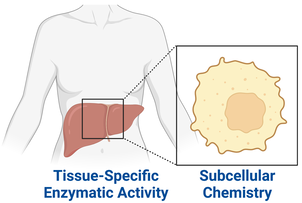Dr. Michael W. Beck
Assistant Professor - Biochemistry Office: 4460 - Physical SciencesPhone: 217-581-6227
Email: mbeck2@eiu.edu
Website: http://Beck-Lab.com
INTRODUCTION
Professor Beck earned his B.S. in Chemistry with a concentration in Biochemistry with ACS certification cum laude at Tennessee Technological University in 2011, where he performed research with Professor Edward Lisic. He then obtained his Ph.D. in Chemistry in 2015 at the University of Michigan with Professor Mi Hee Lim, spending the last year of his graduate studies as a visiting research scholar at Ulsan National Institute of Science and Technology in Ulsan, South Korea. His graduate work focused on designing small molecule chemical tools to study metal-protein interactions in neurodegenerative diseases. Then, as a postdoctoral scholar with Professor Bryan Dickinson at the University of Chicago, he developed small molecule chemical tools to study covalent cysteine PTMs. Professor Beck joined the faculty at Eastern Illinois University in the Department of Chemistry and Biochemistry in 2019.
Education & Training
Ph.D., University of Michigan, Ann Arbor, MI, USA (2015)
B.S., Tennessee Technological University, Cookeville, TN, USA (2011)
Publications
Carbonate-Based Fluorescent Chemical Tool for Uncovering Carboxylesterase 1 (CES1) Activity Variations in Live Cells Singh, A.; Gao, M.; Karns, C. J.; Spidle, T. P.; Beck, M. W. ChemBioChem 2022, Accepted DOI: 10.1002/cbic.202200069
Human Carboxylesterases and Fluorescent Probes to Image Their Activity in Live Cells​ ​​​Singh, A.; Gao, M.#; Beck, M. W. RSC Med. Chem. 2021, 12, 1142.
Funding & Grants
​NSF LEAPS-MPS (NSF 2213273) (7/1/2022-6/30/2024) $250,000 total
NSF Launching Early-Career Academic Pathways in the Mathematical and Physical Sciences
“LEAPS-MPS: Peroxisome Targeting Chemical Technologies and Tools to Study Subcellular Chemistry”
Role: PI
Frequently Taught Courses
- CHM 1310G: General Chemistry I
- Fall 2019, 2020
- Spring 2020
- CHM 1315G: General Chemistry Laboratory I
- Fall 2019, 2021
- CHM 1390G: General Chemistry I, Honors
- Fall 2022
- CHM 1415: General Chemistry Laboratory II
- Fall 2020
- CHM 3300: Survey of Biochemistry
- Spring 2020
- CHM 3450: Biochemistry I
- Fall 2019, Fall 2021
- CHM 3455: Biochemistry Laboratory
- Spring 2021, 2022
- CHM 3460: Biochemistry II
- Spring 2021
- CHM 4790: Medicinal Chemistry
- Spring 2022
- CHM 4860: Advanced Biochemistry
- Fall 2020, 2022
- CHM 5003: Critical Reading of Chemical Literature
- Fall 2021, 2022
Research & Creative Interests
|
​The broad focus of our research is to understand how spatially organized chemistry influences human health through the development and application of new small molecule chemical tools and technologies. Current projects in our group address location-dependent problems at the tissue and subcellular (organelle) level. These project areas utilize multiple techniques and strategies to achieve their goals, allowing trainees in our laboratory to develop a diverse set of skills in the fields of biochemistry, chemical biology, synthetic organic chemistry, medicinal chemistry, and molecular biology.
|
Created with BioRender.com
|
Goals: Our group will develop fluorogenic chemical tools to study enzyme activity and use them to investigate the role of enzymes in context of their tissue localization.
Training Opportunities: Students on projects in this research area gain experience in organic synthesis, molecular docking, fluorescence microscopy and spectroscopy, mammalian cell culture, in addition to various biochemical, molecular biology, bioanalytical, and biophysical approaches.
Impacts: Our chemical tools and the studies they enable will reveal the role in human health of enzymes of interest in context of their tissue-dependent localization. These new biological discoveries will be leveraged to improve and develop new therapeutics.
Publications:​
- Carbonate-Based Fluorescent Chemical Tool for Uncovering Carboxylesterase 1 (CES1) Activity Variations in Live Cells
- ​Human Carboxylesterases and Fluorescent Probes to Image Their Activity in Live Cells​
​
Goals: Our group will generate new modular chemical technologies that can deliver probes and other cargoes to specific subcellular compartments in human cells. These new approaches will then be used to develop target chemical tools to specific compartments to study their (bio)chemistry.
Training Opportunities: Students on projects in this area will gain experience in organic synthesis, peptide and peptoid synthesis, molecular docking, fluorescence microscopy, traditional medicinal chemistry techniques including structure-activity relationships, and mammalian cell culture in addition to various biochemical, molecular biology, bioanalytical, and biophysical approaches.
Impacts: The new versatile and modular subcellular targeting methods we develop will allow for more detailed studies of the role of these organelles in human health. A better understanding of the biology of these organelles paired with our intracellular delivery approaches will enable the development of improved chemical tools and therapeutics.
Publications:​ Coming soon!
Professional Affiliations
Member, American Chemical Society
Member, American Society of Biochemistry and Molecular Biology
Member, Illinois State Academy of Science (ISAS)

